I am so easily riled.
There’s been a slew of articles in the media about “grandma hobbies”, all emanating from one study*, and all recycling the same old, tired old angle that knitting and baking and gardening are things grandmothers do. Give me strength. Is it any wonder that we are virtually out of yarn and fabric shops in this country - even John Lewis here, already vilified for not having washing-up bowls, doesn’t stock reels of cotton thread any more, only polyester - when the headlines firmly label these activities in this way so that they are permanently associated with age, safety, cosiness, rocking chairs, spectacles perched on the end of the nose, and out-of-date images of grey-haired grannies. I mean, I know magazines and newspapers are struggling but FFS there is no need to repeat such patronising tosh.
[Nana quilt]
Theo and his parents are visiting so I’ve been a grandmother all week, actually a Nana, and even I want to dissociate myself from “granny hobbies”. I get so bored with this reductive, Miss Marple-ish stuff.
Having read a huge number of Agatha Christie’s books, I know full well that she does not condescend when she shows Miss Marple knitting. How ironic, then, that Miss Marple is now regarded as the epitome of granny-style knitting, when in fact she using it as a blind, a shield, a way of masking her sharp nose and mind. Not to mention that she is a Miss and not a granny at all.
[‘Jeune fille cousant’ (c1906) by Henri Lebasque]
I started sewing when I was five and have been knitting since I was seven - atrociously at that age, admittedly - and yes, my Nana knitted but so did my Mum, and my very glamorous Auntie Barbara crocheted ponchos which were all the rage when my brother and sister were little. It’s nonsense to imply that women usually take up these hobbies when they reach the stage of being a grandmother and that it’s therefore revolutionary for younger people to adopt them much earlier. But just as wearying as the constant pushing of these skills into the realm of (apparently) harmless old ladies, is the never-ending feminisation of them. There is undoubtedly a worrying element of belittling going on, similar to Trump’s fixation with dolls.
There’s nothing truly manly or masculine about these hobbies, these headlines say over and over, ad nauseam. The shock-horror reporting of Tom Daley and his pool-side knitting is irritating, but so is the fact that elsewhere it’s described as “cute” and “adorable”. (In this photo, I just see Tom doing a great job and the others wasting good knitting time.)
And what’s the betting the phenomenal Kaffe Fassett (pictured here at the age of 84 in 2022) has had to put up with a lot of nonsense and deliberate misrepresentation over the years?
[first published 1972]
If it’s not grannies or men who do not display fully macho tendencies - even the title of this “amusing and practical” book failed to persuade - knitting is also often associated with dangerous or marginal women who are usually far more interesting than anodyne “grandmas”. Knitters such as the tricoteuses in A Tale of Two Cities, or Dorothy Whipple’s aunt’s 'grim companion’ seen from a child’s point of view in The Other Day knitting ‘iron grey socks on murderous steel needles’, or Aunt Hetty in Mrs Miniver who greets her visitors while “rolling up her wool and impaling the ball on her needles as though she was skewering a piece of mutton to make a shashlik”.
[‘Maman’ sculpture (1999) by Louise Bourgeois, yarnbombed by Magda Sayeg (2018)]
They also often suggest a strange, witchy, magical aspect of knitting, something Louise Bourgeois’ work with textiles engages with (it’s not something I feel when knitting). This is Jan Struther again, writing about Mrs Miniver’s sister-in-law who lives in Scotland:
‘"Susan," said Mrs. Miniver, "where did that knitting come from? I swear you didn't have any on you a minute ago. I believe you materialise bits of knitting out of thin air, the way conjurers do with lighted cigarettes."
"No," said Susan, "they grow out of my finger-tips, like a thread out of a spider. As a matter of fact my whole inside is made of wool. One gets like that, you know, living in the Highlands all the year round."
[grandmothers just want to have fun with radish socks]
It goes to show that imaginative writers approach the subject of knitting in far more compelling ways than these run-of-the-mill opinion pieces, especially those who clearly knit and sew and have “grandma hobbies” themselves. When Jan Struther compares hop-picking to knitting - “It was like knitting: you couldn't bear to stop until you had done one more row, one more bine” - you know that there speaks a true knitter.
[Joan Crawford on set in 1941]
Just as you can’t replicate this expression of concentration if you are not really knitting. Joan Crawford was one of the great knitters of Hollywood, another gold-mine of cliches for lazy, off-the-peg articles.
[Pattie Boyd who later married George Harrison of The Beatles, and definitely did not knit that jumper on those needles]
The media is also obsessed film stars and “celebrities” who knit. Tom Hanks collects typewriters which might be a little niche although acceptable as a hobby, but when a female actress knits, it’s always reported with an undercurrent of disbelief and a focus on the disconnect between perceived homeliness and glamour.
[Knitting for Olive, Copenhagen]
I think I am more sensitive to these articles having visiting Norway, Sweden, and Denmark in the last twelve months. No doubt there are plenty of older women who happily knit in those countries, but the culture of knitting is not defined by association with them - nor with any other group. The contrast with the UK is astounding. There are brilliantly stocked yarn shops everywhere you go, staffed by knowledgeable knitters, both men and women of all ages, and there is no self-consciousness about the craft, no infantile media bias. People knit, they go to proper shops near where they live to buy needles and yarn, and there’s a huge interest in local and traditional knitting without it being chained to the past. That’s it.
[‘The Felixstowe to Ipswich Coach’ (1940s) by Russell Sidney Reeve]
Whatever else the Scandinavians choose to ascribe to their knitting and other “grandma hobbies” is up to them, but I get the feeling that younger knitters don’t feel they have to justify what they do as craftivism or making a public statement about mindfulness or mental health or community or reclaiming something.
[Jeune fille cousant sur un canapé (c1925) by Henri Lebasque]
Because this nice, practical thing which you can do on your own terms, in your spare time, on trains and buses, in meetings**, in lectures***, while waiting in the car, while sitting on your favourite chair or squishy settee, was never lost in the first place.
Happy Sunday!
*I’ve just seen that the study dates from 2013! I rest my case about recycling the same old stuff
**oh the fuss about Ylva Johannson when she was filmed in 2023 knitting during an EU parliamentary session
***in Iceland - see Names for the Sea by Sarah Moss




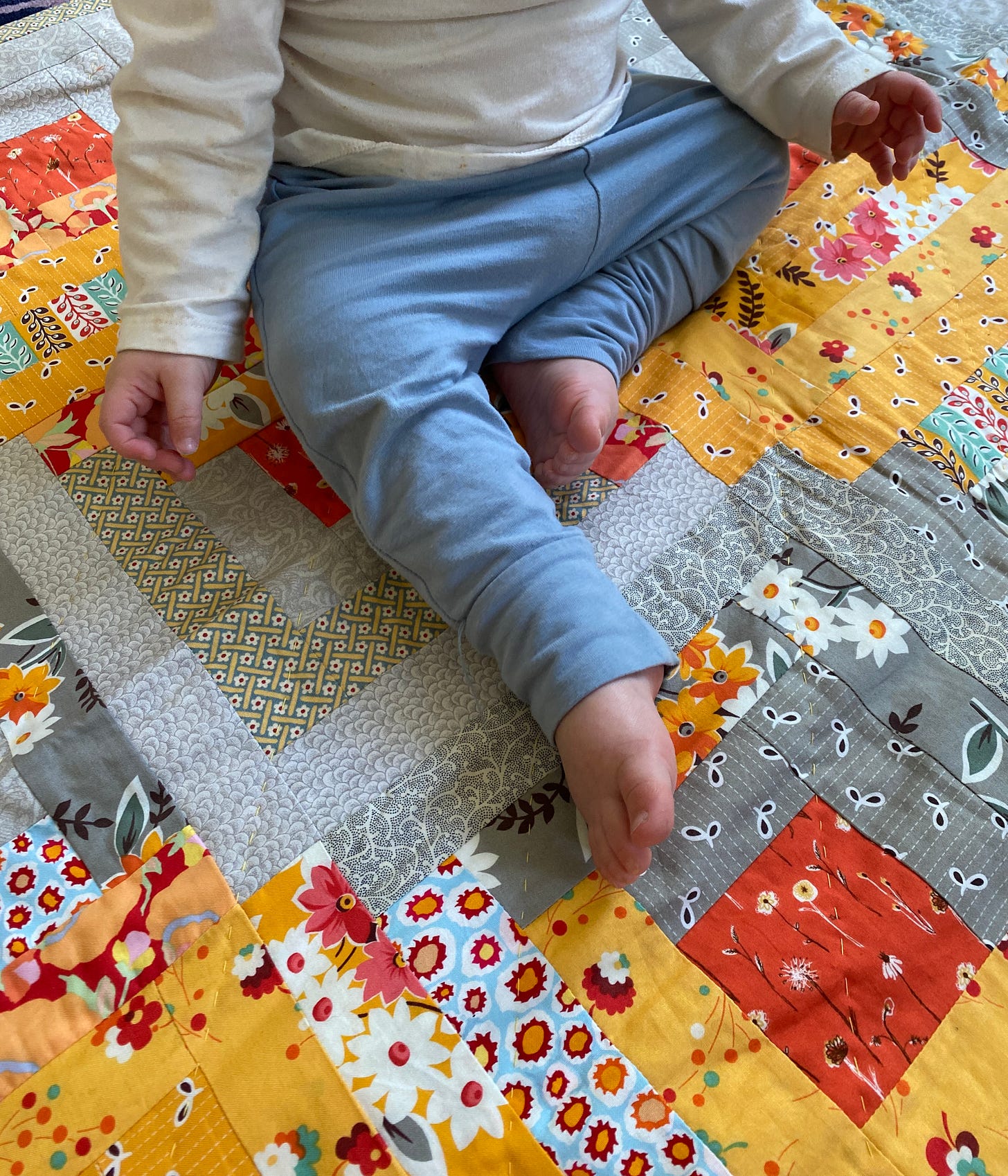



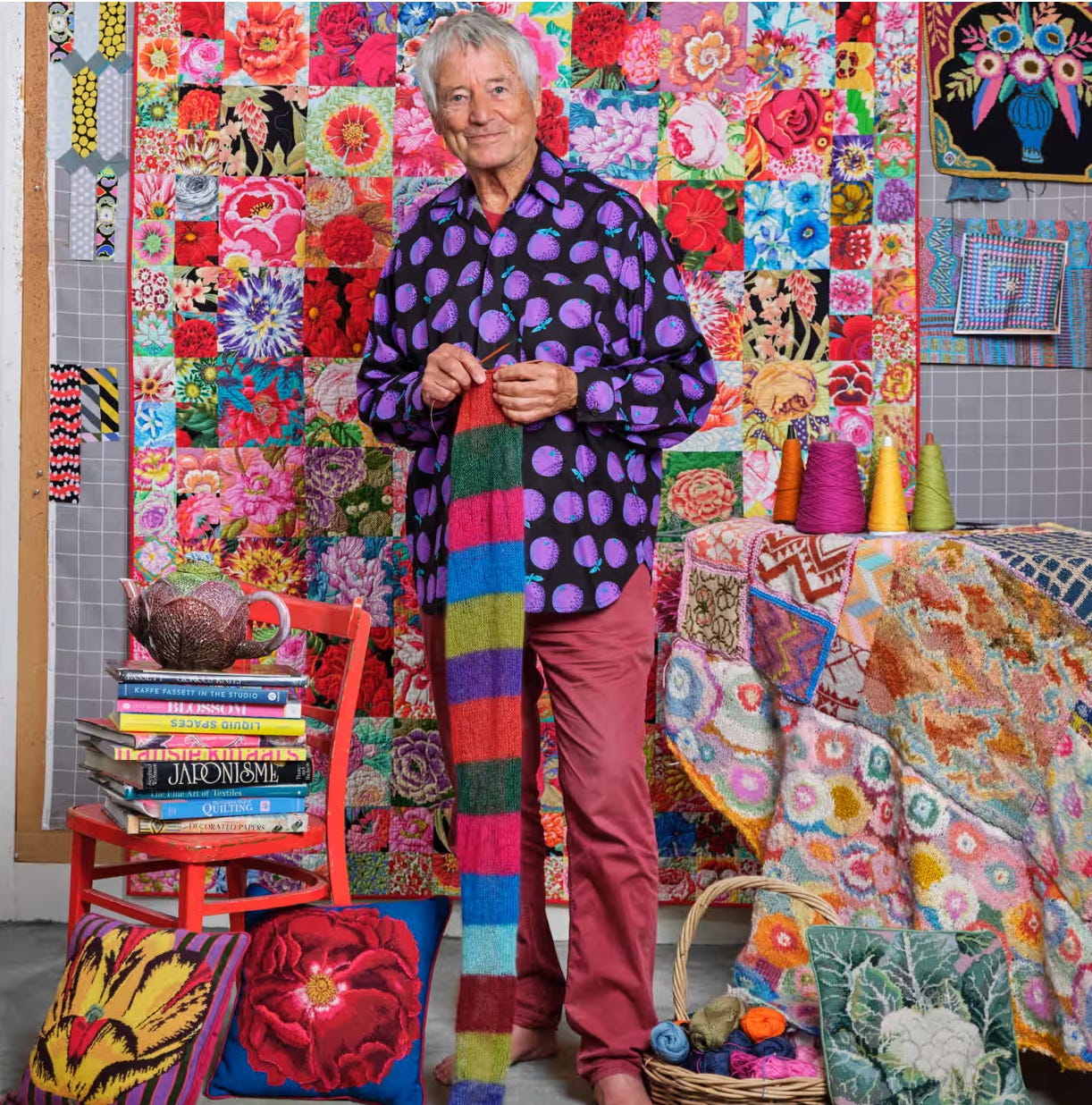
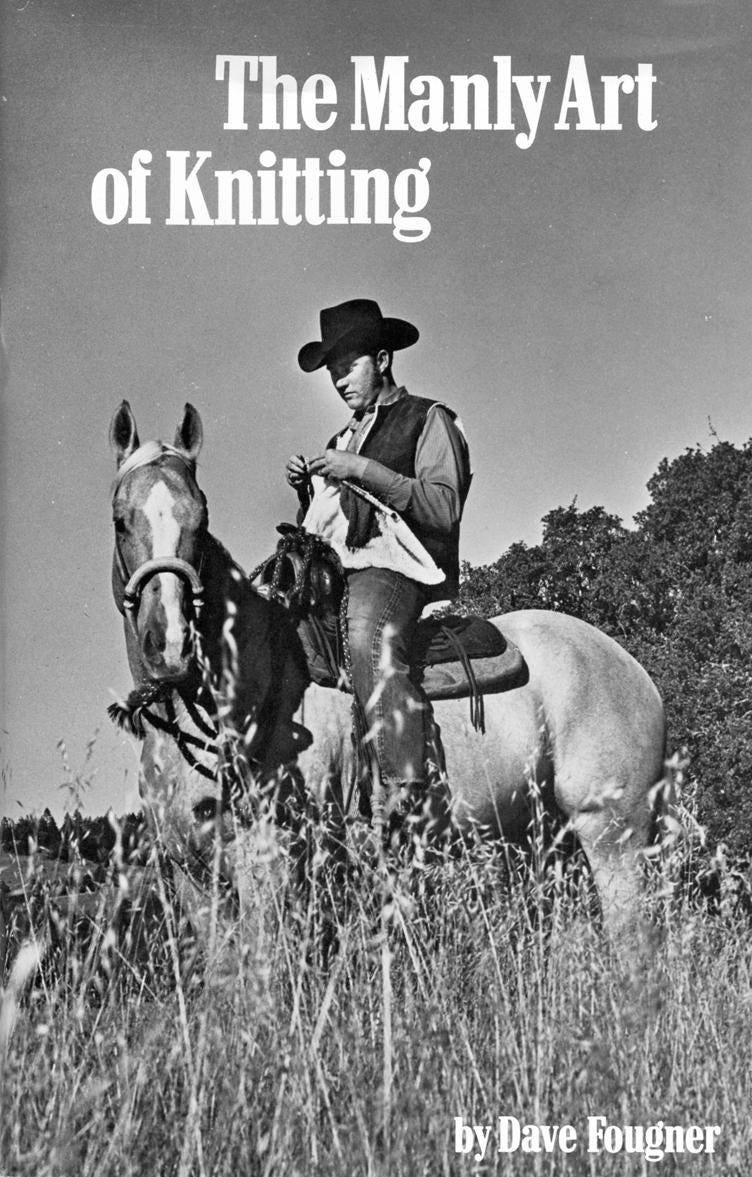

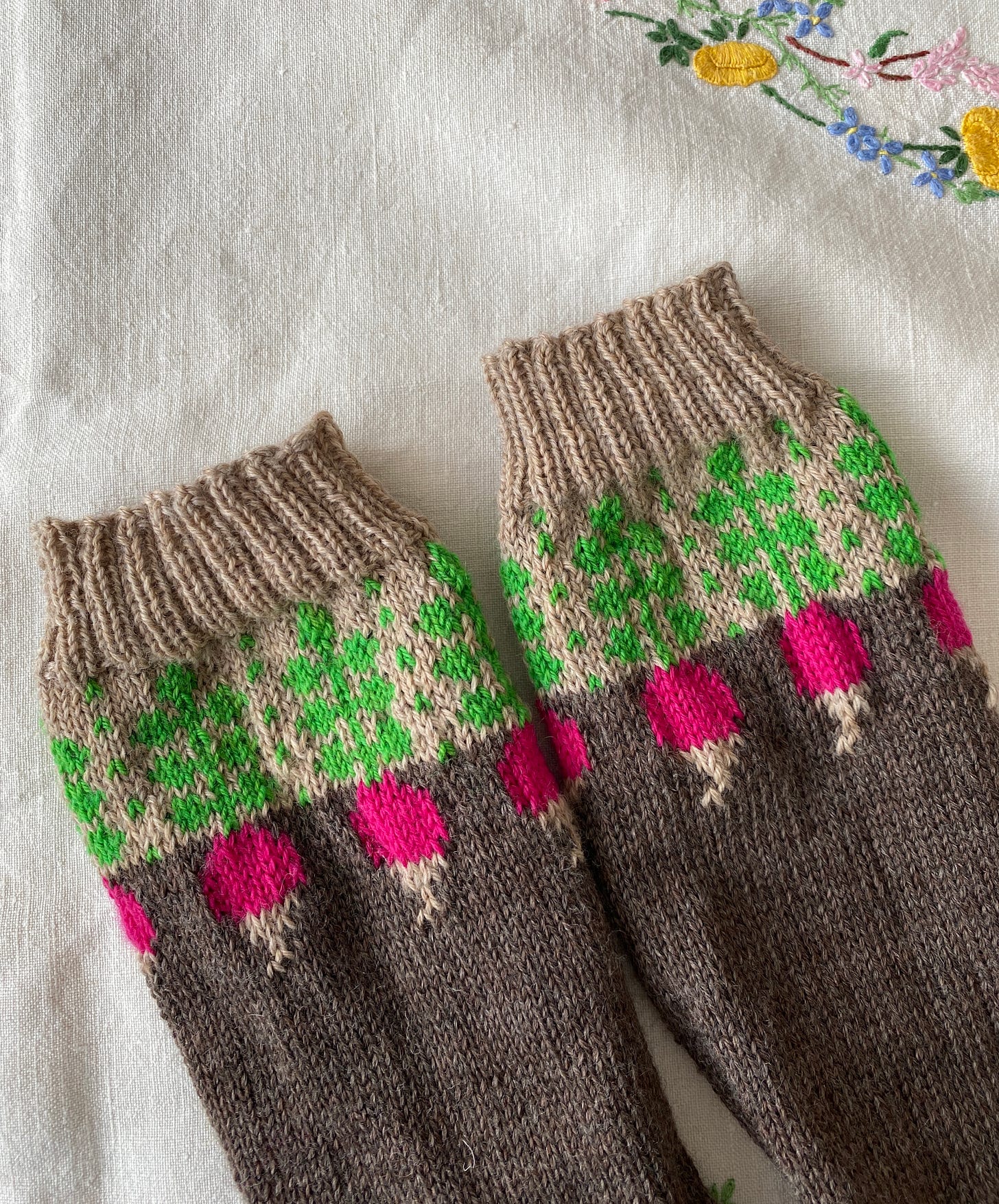

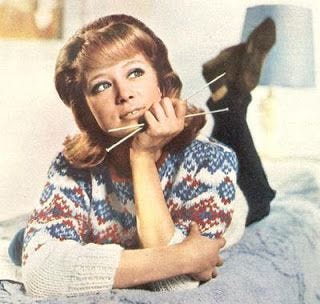
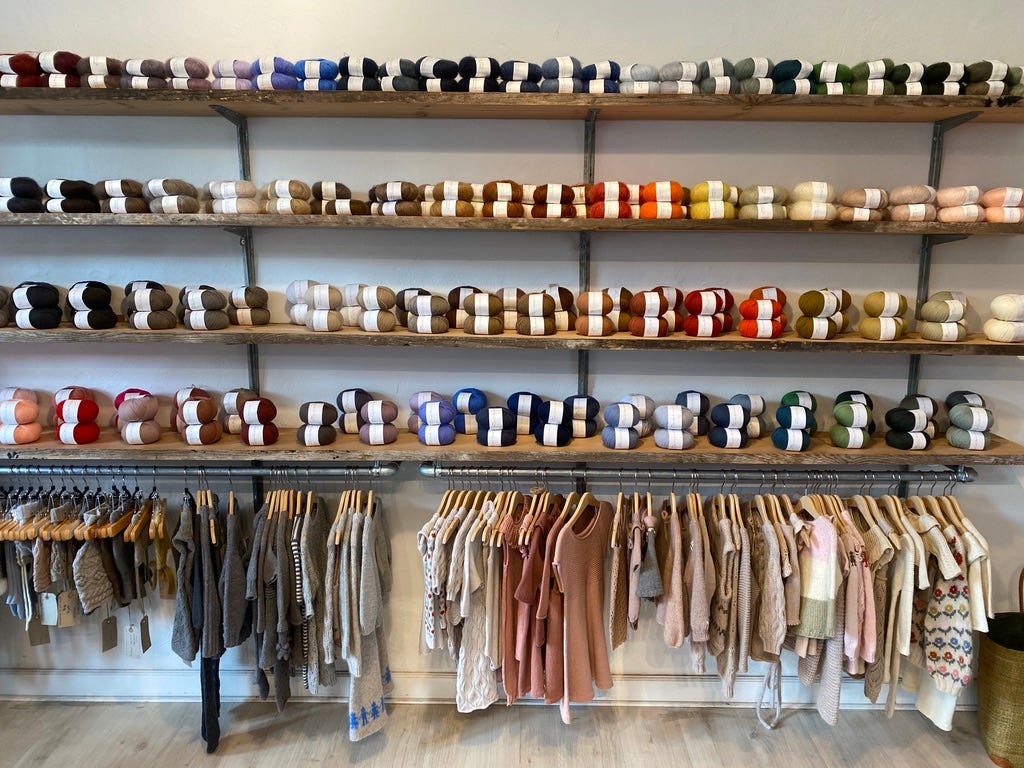
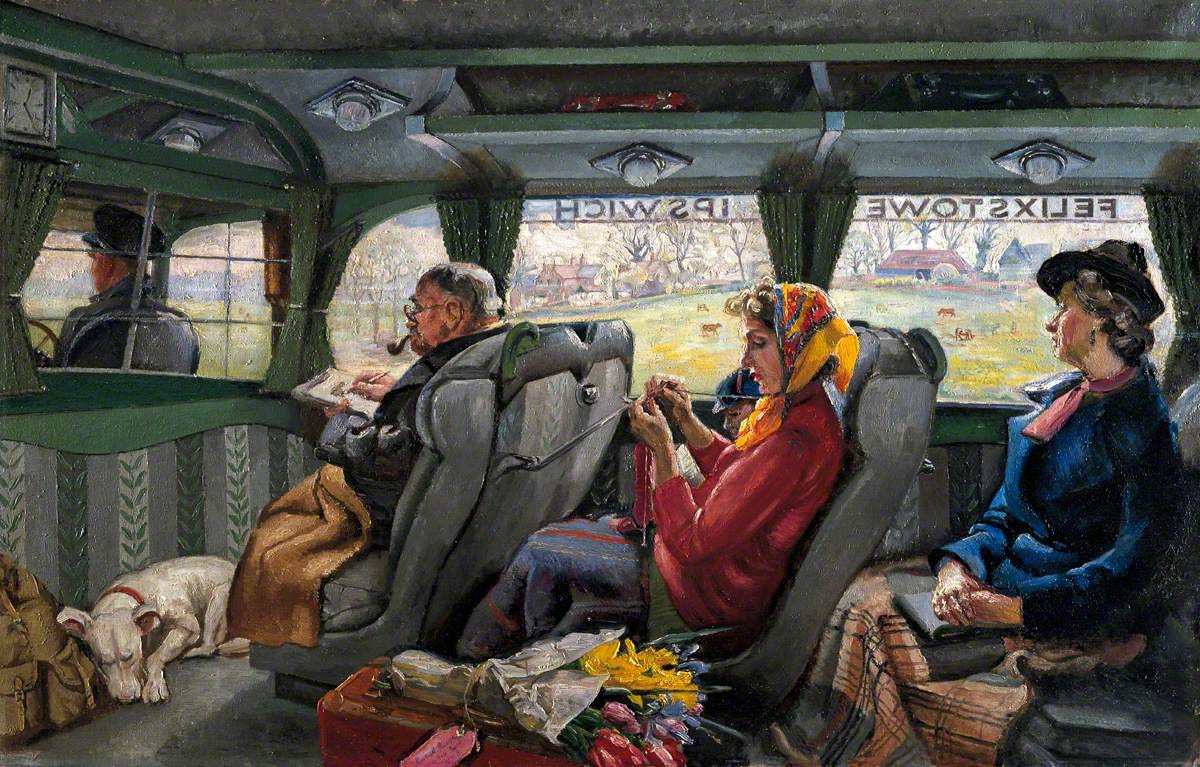
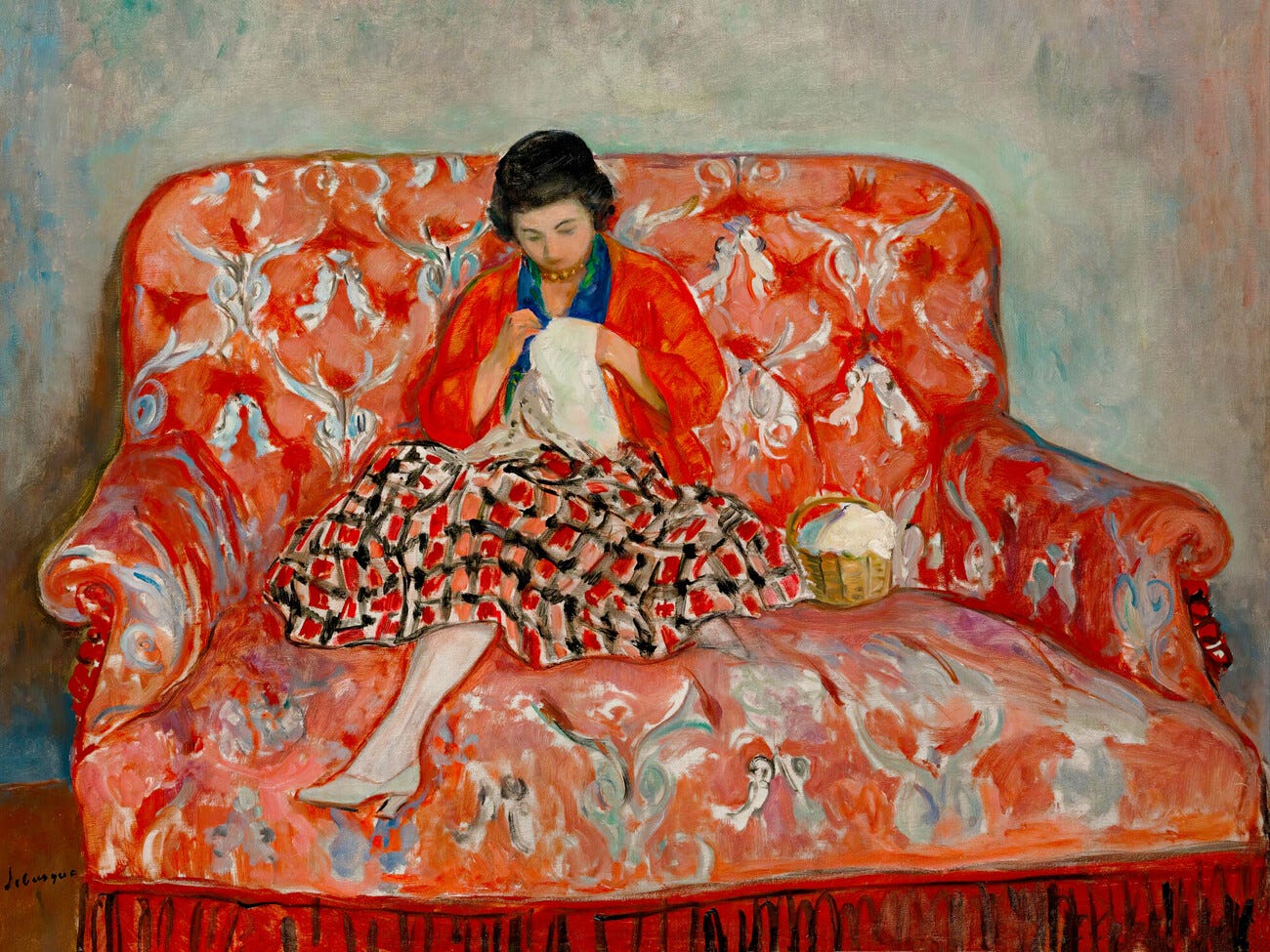
So TIRESOME.
And may I add, whenever these articles pop up in the media, the focus is all about the supposed “benefits” - reduced anxiety, reframed productivity , blah blah blah. Can we not just do something because we enjoy it?
Love this Jane. I, like you started knitting ( badly at first) aged eight and now approaching 60 still bring my knitting wherever I go-on the tube ( sock knitting very portable), in the pub, in my desk drawer at work to do a few quick rows in my lunch break.
Over the years I have heard everything about Granny hobbies. I just smile quietly and carry on with the knowledge that until you become a knitter ( or sewer/quilter…) you cannot understand the joy and satisfaction of creating something beautiful in such a calm and peaceful way. It transcends everything ‘mindful’ for me. Keep writing please and those pictures are always a delight. 🧶